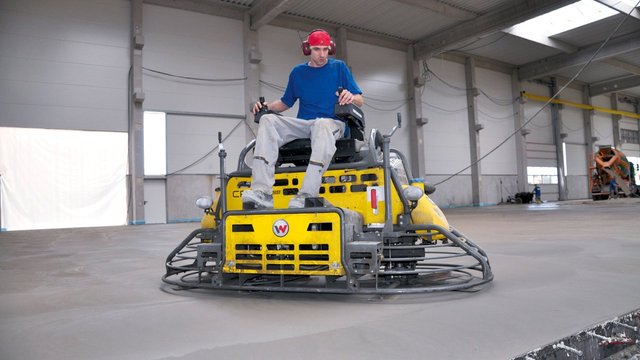The latest world technology concreting, mega machinery and equipment

Concrete (from the French béton.) - Artificial stone building material, produced by molding and hardening of rationally selected and compacted mixture of binding material (eg, cement), large and small aggregates, water. In some cases it may be composed of special additives, as well as free of water (e.g., asphalt).
Concrete is known for over 4000 years (Ancient Mesopotamia), particularly widely used in ancient Rome. Italy - volcanic country, which are easily available components that can be prepared in concrete, including pozzolans and lava rubble. The Romans used concrete in mass construction of public buildings, including the Pantheon, whose dome is still the largest in the world made of reinforced concrete. In the eastern part of the state, this technology was not widespread, there has traditionally been used in the construction of the stone, and then a cheap plinfa - kind of brick.
Due to the decline of the Western Roman Empire, large-scale construction of monumental buildings has come to naught, making inappropriate use of concrete in conjunction with the general degradation of craft and science has led to the loss of its production technology. In the early Middle Ages, the only major architectural objects were churches that were built of stone.
Modern concrete on cement binder known since 1844 (I. Johnson). The patent for Portland cement in 1824 was Joseph Aspdin; a patent for a "Roman cement" was in 1796, James Parker.
A world leader in the production of concrete are China (430 million m³ in 2006) [2] and the US (345 million cubic meters in 2005 and 270 million m³ in 2008) in Russia 52 million m³ were produced in 2008.
Cement is produced by mixing cement, sand, gravel and water (the ratio depends on their brand of cement, sand and humidity fraction and crushed stone), as well as small amounts of additives (plasticizers, water repellents, and the like. D.). Cement and water are the main binders in concrete production. For example, the application 400 of cement concrete for the production of stamps 200 is used a ratio of 1: 3: 5: 0.5. If the applied cement grade 500, with the ratio obtained conditional concrete grade 350. The ratio of water and cement ( "water-cement ratio," "water-cement unit", referred to as "W / C") - an important characteristic of concrete. From this relation depends concrete strength: the lower the W / C, the stronger the concrete. Theoretically enough hydration of cement W / C = 0.2, but in such concrete is too low ductility, so in practice are used in the W / C = 0.3-0.5.
A common mistake with artisanal production of concrete is an excessive addition of water, which increases the mobility of concrete, but it is several times reduces its strength, so it is very important to accurately observe the water-cement ratio, which is calculated according to the tables depending on the brand of cement.
Wow that must save sooo much time the machine strangely looks like some sort of street cleaner lol. upvoted.